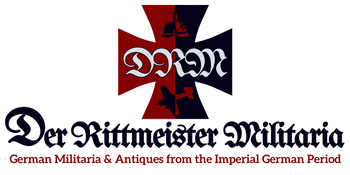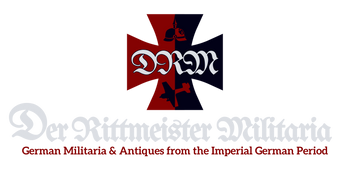Saxe-Coburg and Gotha (Herzogtum Sachsen-Coburg und Gotha)
CLICK HERE FOR ALL PRODUCTS RELATED TO SAXE-COBURG AND GOTHA
Basic Information
- Official Name: Duchy of Saxe-Coburg and Gotha (Herzogtum Sachsen-Coburg und Gotha)
- Capitals: Coburg and Gotha (dual capitals)
- Motto: "Fideliter et constanter" (Faithfully and steadfastly)
- Established: 1826 following the reorganization of Ernestine Saxon territories
- Dissolution: Transitioned to separate Free States in 1918 following the abdication of Duke Carl Eduard.
-
Key Symbols:
- Coat of Arms: Features a green crown of rue on a gold and black striped shield, with elements representing both Coburg and Gotha.
- Flag: Black and yellow horizontal stripes.
Geographical Overview
-
Location:
Situated in central Germany, surrounded by Prussia, Bavaria, and other Saxon duchies. -
Size:
A small but politically influential duchy with fertile lands and significant cultural heritage. Major towns included Coburg, Gotha, and Sonneberg. -
Land Features:
- Thuringian Forest: A dense, hilly region shared with neighboring duchies.
- Itz River: Supported agriculture and small-scale trade in Coburg.
Historical Timeline
-
Early History:
- 16th Century: Formed as part of the Ernestine Saxon divisions.
- 1826: Established as a unified duchy after territorial reorganizations of the Ernestine Wettin line.
-
Duchy Era (1826–1918):
- The duchy gained international prominence through dynastic marriages, including the British Royal Family.
- 1871: Integrated into the German Empire while retaining internal autonomy.
-
Decline (1918):
- The abdication of Duke Carl Eduard during the German Revolution led to the dissolution of the duchy, transitioning to separate Free States for Coburg and Gotha.
Notable Rulers and Leaders
- Ernst I (1826–1844): The first duke of the unified duchy, a military leader and patron of the arts.
- Prince Albert (1819–1861): Although not a ruler, the consort of Queen Victoria of Britain was a key figure from the Coburg dynasty, influencing European politics and culture.
- Carl Eduard (1905–1918): The last duke, whose reign ended with his abdication during the German Revolution.
Military and Political Strength
-
Military Contributions:
- Saxe-Coburg and Gotha provided a small but efficient force to the Imperial German Army.
- The duchy’s regiments often collaborated with larger Saxon or Prussian forces.
-
Political Role:
- Governed as a constitutional monarchy under the Ernestine Wettin dynasty.
- The Coburg family played a significant role in European politics through intermarriage with major royal houses.
Cultural Contributions
-
Architecture:
- Veste Coburg: A well-preserved medieval fortress and residence of the dukes.
- Friedenstein Castle: A Baroque palace in Gotha, known for its art collections and historic libraries.
-
Arts and Literature:
- The duchy supported Romantic composers and writers, hosting cultural gatherings in its castles.
- Prince Albert was a patron of science, music, and art during his time in Britain.
-
Education and Science:
- Gotha was a center for cartography and geography, producing some of Europe’s most accurate maps.
- The duchy promoted scientific research in astronomy and natural sciences.
-
Cuisine:
- Known for hearty dishes like Coburger Bratwurst and Gothäer Klöße (potato dumplings).
- Coburg’s beer culture was celebrated in regional festivals.
Fall of Saxe-Coburg and Gotha
-
World War I (1914–1918):
- Anti-German sentiment, particularly in Britain, strained the duchy’s international ties.
-
German Revolution (1918):
- Duke Carl Eduard abdicated, and the duchy split into the Free States of Coburg and Gotha. Coburg later merged with Bavaria, and Gotha joined Thuringia.
-
Post-WWII (1945):
- Gotha became part of East Germany, while Coburg remained in West Germany.
Connections to Products
-
Cultural Artifacts:
- Memorabilia featuring Veste Coburg and Friedenstein Castle.
- Commemorative items celebrating Prince Albert’s legacy in Britain and Europe.
-
Military Memorabilia:
- Regimental badges and medals from the duchy’s contributions to the Imperial German Army.
- Uniforms and ceremonial swords reflecting the duchy’s military heritage.
-
Historical Documents:
- Maps and publications from Gotha’s renowned cartographic institutes.
- Royal correspondence and treaties tied to the Coburg dynasty.
-
Tourism and Culinary Items:
- Guidebooks and postcards featuring Coburg’s and Gotha’s landmarks.
- Tools and recipes for making Coburger Bratwurst and Gothäer Klöße.
-
Educational Contributions:
- Publications on the duchy’s advancements in cartography and geography.
- Records from the Friedenstein Castle’s archives and libraries.







